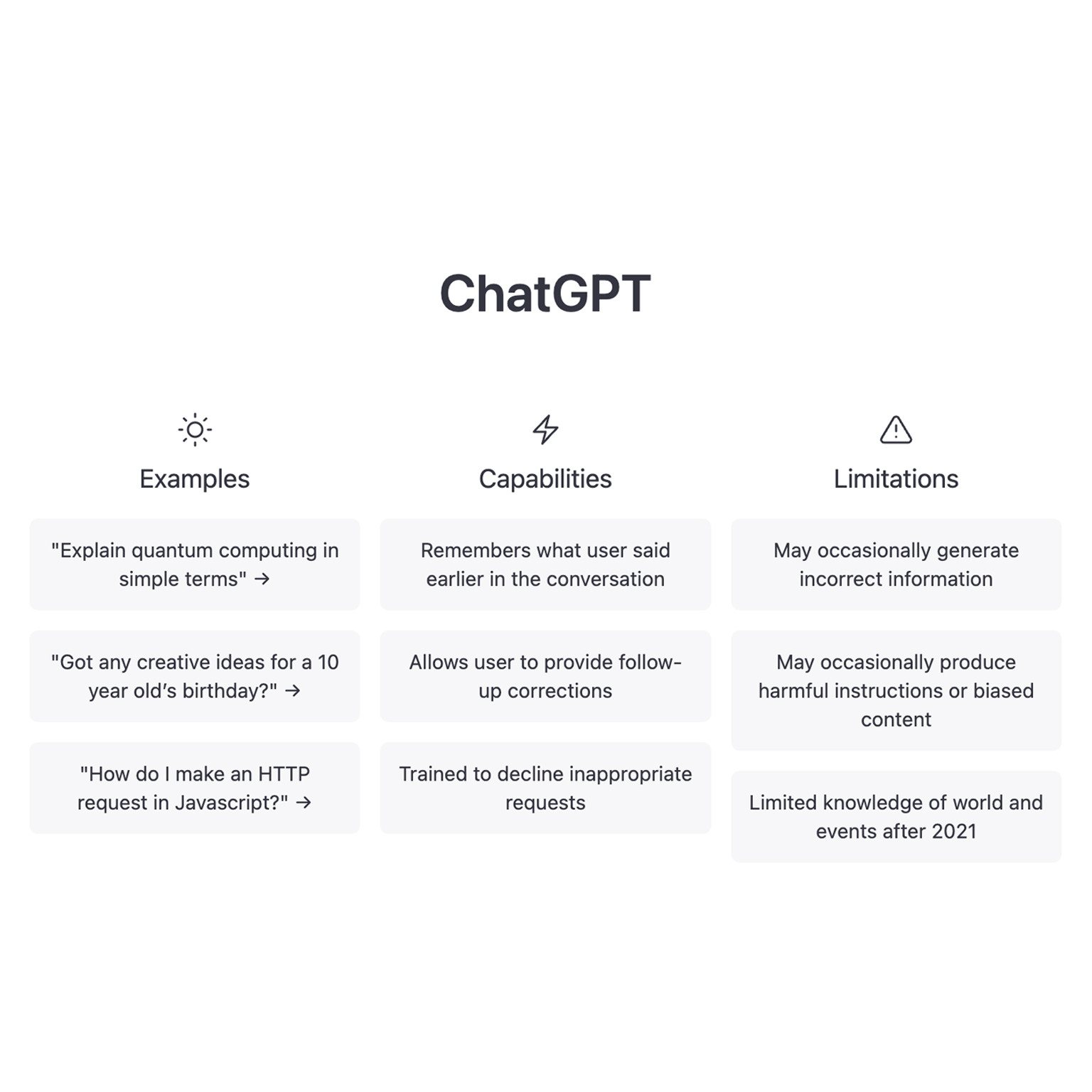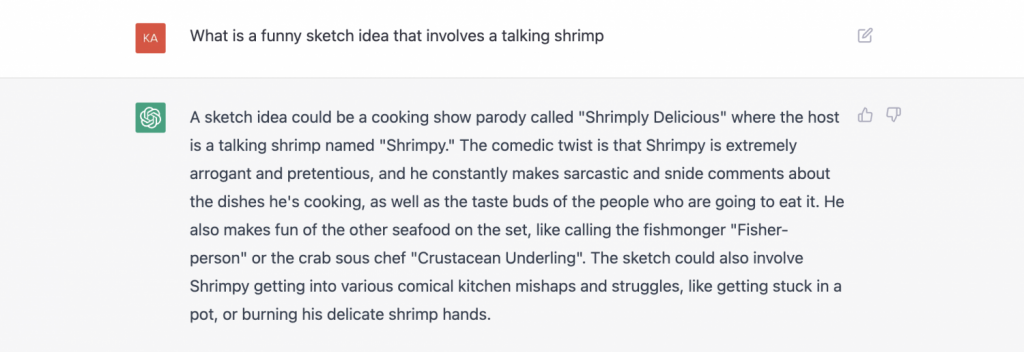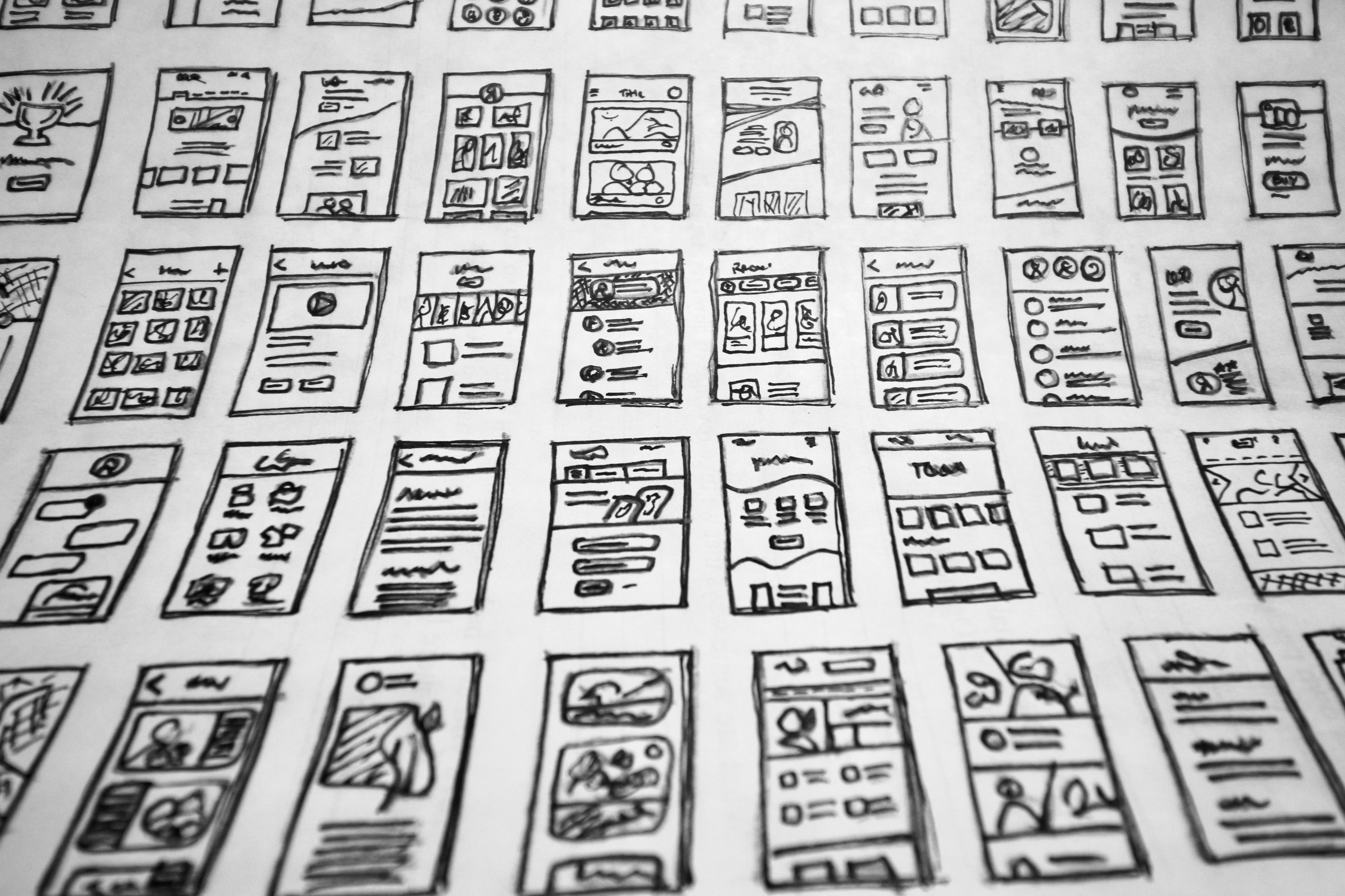Behavioral Design is the Future of UX
Successful apps aren’t just usable; they make users want to use them. Too often, companies build an expensive app, only to struggle with user...

If you spend any amount of time online, chances are you’ve heard of ChatGPT, but maybe you don’t know what exactly it does. That’s okay—you’re not alone in that. Despite constant chatter about the new technology, many people haven’t quite wrapped their heads around its capabilities. Well, as any good journalist knows, in order to tell a story, you must go straight to the source itself. So, when we asked ChatGPT how best to describe itself, it told us the following:
“I am an AI language model trained by OpenAI. I am a computer program designed to process and generate human-like text. I do not have my own thoughts or feelings, but I can analyze and understand written and spoken language, and I can use that understanding to respond to questions and prompts. I can also generate original texts based on a given prompt. I am trained on a large dataset of human-generated text and can use that knowledge to answer questions and engage in conversations on a wide range of topics.”
Make sense? If not, don’t worry because, as we found out, much of what ChatGPT says doesn’t entirely make sense. Sometimes it’s a robotic word soup of mumbo jumbo, while other times, it’s shockingly human.
While ChatGPT is undoubtedly a step above the current customer service chatbots that ask you to choose between a limited number of responses, when you try to boil down the accuracy of ChatGPT’s statements, you find a considerable number of inaccuracies mirrored in a voice of complete confidence.
So if this technology doesn’t quite sound like a human yet (although it’s passed the Turing test), why is it making waves across the internet over its potential technological implications? Will it stand to revolutionize search engines and phone apps as we know them, or is this simply a novel technology that will fade away?

ChatGPT is a powerful AI chatbot that allows you to ask it questions using everyday language (as opposed to search terms) and then responds to these questions in a conversational manner. While its language is not as stilted as the rote chatbot answers most of us have grown accustomed to, it does generate human(ish) sounding responses on a variety of different subjects.
ChatGPT succeeds in answering common, fundamental questions with heavy amounts of literature surrounding their answers, such as general knowledge facts, historical events, scientific principles, coding questions, and basic language questions. Additionally, ChatGPT remembers previous things you’ve said and can generate responses based on your past inquiries.
Another unique feature of ChatGPT is its ability to create unique works of art, such as poetry, musical compositions, scripts, and stories. However, after testing this feature ourselves, it’s clear that, while entertaining, it’s still no replacement for actual human creativity. Take, for instance, this poem which we asked ChatGPT to write about dogs, but in the style of Sylvia Plath:
“Paws pounding on the pavement
Ears flapping in the wind
Tongues lolling, eyes alight
Dogs run, hearts full and free
Fierce loyalty and boundless joy
A love that knows no bounds
They are our faithful companions
Our furry friends, our hounds
But oh, the pain that comes with love
As they age and start to gray
The ache of loss, the empty space
When they pass and run away
Yet still we love, and always will
For they bring us so much light
Dogs, our faithful, furry friends
Forever in our sight.”
While ChatGPT certainly comes close to the basic themes of Sylvia Plath (see: existential despair), its attempt is not exacting literary merit at the current moment.
Although its storytelling capabilities are a bit more convincing, albeit rudimentary at best, it’s hard to ignore that this is only one of the earliest iterations of what this technology aims to become. Whether or not it’s an indicting statement about the American education system, ChatGPT’s basic storytelling and writing are currently viable enough to have teachers concerned about its implications for the future of plagiarism.
And it’s not just the word soup of ChatGPT’s high art attempts that highlight the other kinks in its system. While ChatGPT is knowledgeable in areas where it’s received sufficient data to respond with, it doesn’t continuously spew out the correct answer.
In fact, StackOverflow has banned ChatGPT from answering questions on its platform because its accuracy rate was woefully low. While Twitter remains abuzz with the amount of coding bugs that ChatGPT successfully finds, the implication for it spreading a wide variety of misinformation is one of the main reasons it has yet to challenge Google.
Take, for instance, this 300-calorie meal plan we asked ChatGPT to create for dinner, of which it created three different options:
Dinner (300 calories):
-3 oz of grilled chicken (150 calories) with 1 cup of roasted vegetables (100 calories) and 1 small baked sweet potato (103 calories)
-1 cup of brown rice (215 calories) with 4 oz of tofu (100 calories) and 1 cup of steamed broccoli (55 calories)
-4 oz of grilled salmon (200 calories) with 1 cup of quinoa (222 calories) and 1 cup of steamed asparagus (50 calories)
Notice any glaring mistakes in this meal plan? While it’s certainly a healthy meal plan, the calories don’t add up, nor does ChatGPT list any resources as to where it formulated its calorie count, which makes it susceptible to incorrect calculations.
So, how does this technology work, and why is it prone to conflating facts and spouting information that isn’t always true? Well, the answer lies in the information ChatGPT is trained with.
ChatGPT is trained with vast amounts of computer data over the course of several weeks. Thus, the more prone to bias its information, the more likely its answers will waiver in consistency and accuracy. Additionally, the less information it’s trained on, the more likely you will hit a roadblock in its ability to answer your question.
Programs to “train” the software include feeding it random paragraphs, omitting a word, and then asking it to fill in the blank. When it’s a correct or appropriate response, then it’s essentially “rewarded.”
To fine-tune its accuracy, ChatGPT is then trained using unsupervised and self-supervised learning, where it derives information from the data instead of labels or examples.
ChatGPT can also be trained and fine-tuned to various applications by analyzing specific data sets and adjusting its parameters. Currently, it’s an open-source technology that is free to use for everyone via OpenAI’s website.
ChatGPT was created and released in November of 2022 by OpenAI, which recently made waves in the media with DALL-E, an image-generating AI that can create a wide variety of images based on textual commands. OpenAI was founded in 2015 by high-profile tech entrepreneurs (including Elon Musk and Sam Altman) who sought to utilize AI in a variety of fields, such as machine learning, robotics, and economics, in a way that would be beneficial to humanity.
For now, ChatGPT has a long way to go before becoming a true competitor to Google. While it is certainly useful for creating a more human-friendly, conversational language, its answers are unreliable, which is its fatal flaw at the given moment.
It does, however, offer a new and valuable tool for searching for information and delivering answers in succinct, logical ways that are, for the most part, communicated effectively. Not only does this mean a new and effective way of digesting information, but it also shows promise in delivering smarter, more coherent answers for customer service chatbots and beyond.

While certain avenues are clearly going to be using ChatGPT in the near future (search engines, customer service chatbots, automated services, and story-generating apps), many of its applications will likely be far more expansive than can be currently predicted. Below are a few of the most recent ways that apps are utilizing ChatGPT in the current marketplace:
DoNotPay is an app to help people fight traffic tickets and other bills. They are currently working on creating a Chrome extension that uses ChatGPT to help automatically negotiate lower bills for things like traffic tickets or utilities. Their tech works by having customers fill out the necessary forms and using ChatGPT to automate and negotiate with companies to reduce their bills.
Carbon Health, a comprehensive patient portal app, is excited about the prospect that ChatGPT can devise comprehensive meal plans for clients and generate grocery shopping lists to help take some of the heavy legwork out of losing weight and maintaining healthy habits. While ChatGPT still has a ways to go to refine its skills in devising meal plans and workout routines, Carbon Health remains hopeful about what the tech may help clients achieve in the future.
While ChatGPT’s literary abilities seem to be limited in complexity, where it does succeed is generating customized stories that are suitable for children of all age levels. Expect this tech to be a valuable option for parents on the go or too tired to read their children a story at bedtime.
The complex language models utilized by ChatGPT are sure to be implemented in virtual assistant technology such as Alexa or Siri, allowing their communication to be less stifled and much more complex and allowing their utility to be integrated into more apps with ease.
Additionally, ChatGPT promises to change the landscape of chatbots within the service industry, social media apps, and much, much more, allowing them to answer a far wider variety of questions with much larger accuracy.
Apps such as Google Translate currently implement language modeling technology to accurately translate text and speech from one language into another. Additionally, the technology shows promise for increasing language processing capabilities for apps designed for language generation, text summarization, and grammar-checking.
While it’s clear that ChatGPT is making considerable strides in the way of chatbot technology, it’s also clear that the technology isn’t all there yet. However, that doesn’t take away from the fact that it is leaps and bounds above any language modeling technology we’ve used up until now. And what this means for how we search for information in the future is undoubtedly about to change.
If you’re looking to incorporate the latest technology into your application, Designli is here to help. Are you intrigued by ChatGPT and curious to find out if it could benefit your app? No worries— we’d love to discuss the right solution for your product. Let’s chat!
You might also like:
Subscribe to our newsletter.

Successful apps aren’t just usable; they make users want to use them. Too often, companies build an expensive app, only to struggle with user...

Did you know that 90% of startups fail? The path to success is paved with challenges, and securing funding is often the biggest hurdle. But what if...

Businesses can work smarter, faster, and with more flexibility than ever before thanks to enterprise applications and enterprise application software...
Post
Share